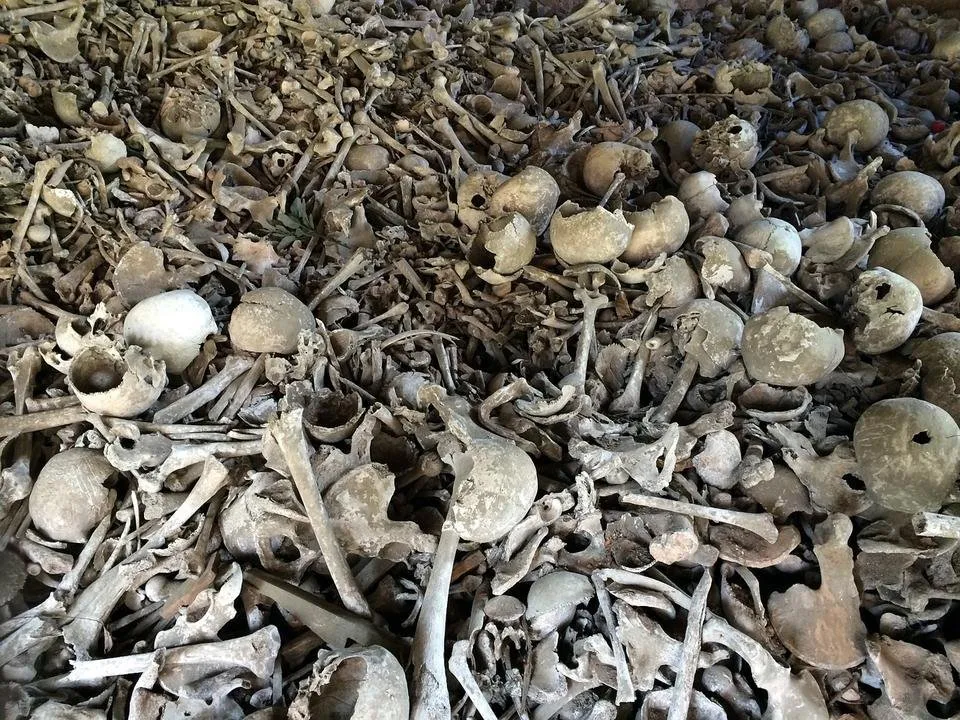
Image Credit: Pixabay Commons
Have you ever feel so blown away when a thousand year old bone (remains) is discovered? When you see Bones, teeth, hairs, nails and sometimes flesh not decomposed totally from an age long old organisms, you wonder the mystery behind why that particular discovery had not turned into soil or other minerals. I am so sure you must have pondered on it like me, seems miraculous but not a magic because there are many scientific factors behind this phenomenon.
When archaeologists excavate sites and a thorough analysis of a fossil that had been discovered is done, some part of the still remains intact, irrespective of how long it has stayed hidden and covered up. However, the bone might seem not to decay but it eventually decompose, sometimes it could take longer than five generations of human before a particular body (i.e bones of the deceased) undergoes the final decaying process, it takes so long and at times short period of time which depends solely on both intrinsic and extrinsic factors.
These factors also affect the Human bones which are the last components to decay after death, just like every other animals both in existence and in extinct. The skeletal framework of a body is made of some special minerals which makes it withstand a lot when other component of the body has dissolved.
STRUCTURE OF THE BONE
It seems like the bone never decays because of some certain factors, the fact is that, skeletal system of animals does decay, but it might not be according to time in the human eye. This process of decomposition is bone degradation at a slower rate depending on the soil structure and region. Understanding the decomposition of the skeletal system will require knowing the general make-up of the bone, which is the composite tissue in the body of an animal consisting of proteins, minerals and ground substances.
The protein part of the bone is made up of collagen (the supporting part of the body) that is made up of hard tissues proteins which has more resistance to decomposition than other body tissue proteins.
Minerals consisting of hydroxyapatite, this the natural minerals that makes the bone stiff and not soft, it contains the Phosphorus and Calcium present in the bone.
Ground substances comprises of other organic compounds.
Therefore, the process by which bones decomposes is called “Digenesis”, it is certain that your bones and my bones could remain for quite a while after we are gone because it quite resist degradation, hence it seems the skeleton remains and rarely decay but it would eventually go through digenesis, here it finally gets broken down through the aid of some physical elements such as;
- Dissolution
- Decalcification and
- Physical breakings.
HOW THE SKELETON (BONE) BREAKS DOWN DURING DECOMPOSITION
Only fire, burning at 3000 Fahrenheit at least could dissolve bones into ashes quickly. Aside acids and other toxic chemicals that could dissolve the skeleton of any animal without a trace. Other than this beyone physical instances, the slow process of digenesis begins with the eradication of organic collagen as a result of bacterial enzymes in actions. This is when protein is disintegrated into peptides by the enzymes and then further broken down into constituent amino acids that could be sucked away by water underground.
After which is the Hydroxyapatite content, which is then degraded after the collagen has been eliminated from the bone, this degrading is done by inorganic mineral weathering e.g. Calcium which is wasted into the surroundings. Full disintegration of the bones takes place after overall structure has becomes so weak, a continual process to the now-weaken strength of the bone which is made available by the bond put in place by stronger protein-minerals.
THE FACTORS DETERMINING BONE DECOMPOSITION
For a bone, that is the skeletal setup of any organism to decay, the above processes must have taken place. However, this process could take place ranging in years (tens to thousands) before total decomposition is achieved. Everything must go back to the soil, the source, therefore it could take millions of years but it would definitely happen.
Location of a body, the place in which a skeletal framework is situated after death plays a major role in how fast or super slow the decaying process of the bone takes.
In boggy soils, the body is tanned by soil water (containing minerals) which makes the bones disintegrate faster leaving the flesh which is then preserved for a much longer time, this form of preservation occurs when some form of acids in a particular place is higher which dissolves bone minerals swiftly.
The reverse is the case in extreme cold or dry and hotter regions, bodies in the dry regions are exposed to certain minerals (especially a rare form of salt) known as Natron, hence, body tissues not excluding the skeletal remains could be preserved much longer, maybe for thousands of years or even millions.
Some typical examples are several Egyptian Mummies that had being recovered in Africa, remains of the Woolly Mammoth (an extinct animal) that was found in Bolshoy ILek, near the central Russia Chulym River. Also, skeletal remains of early Homo-Sapiens over 90,000 years ago found in the Northern Sahara desert region, all still intact and some with remains of flesh.
For humans, teeth and bone are all that you could find after a year that a body has been buried in most part of the world with average temperature, in colder climates, flesh could still remain even after decades. Depending on the acids and minerals present in the soil, this is the determining factor in the decomposing process of the skeletal remains of a body, animals or any organisms.
Thanks for reading.
References
What is the reason why bones don't decompose?
Do bones decay
Huge graveyard of Dinosaur and Woolly Mammoth bones found in Russia
Why dont teeth hair and nails decompose

